On Nakba Day, April 17, 2002, about 200 of us gathered, Jews and Arabs, displaced residents of Miske and members of Zochrot, at the place where the village of Miske existed until 1948. We commemorated the destruction of the village on the day that signifies the Palestinian tragedy of the destruction of over 500 villages and the expulsion of 80% of the Palestinian people. This day is also the Independence Day of the state of Israel. Independence Day and Nakba day are connection not only because the establishment of the state came at the expense of Palestinians; during the period of martial law, which lasted until 1966, Arabs in Israel were not able to travel freely without government permission. Only on Independence Day were they allowed to leave the confines of their villages, and thus arose the tradition of internally displaced refugees commemorating Nakba Day on the day of Israel's independence.
Zochrot's aim is to return consciousness of the Nakba to the Jewish public in Israel. Thus, there could not be a more fitting day, Nakba Day, to begin signposting activities of the destroyed Palestinian villages in the land. Nakba Day 2002 is, if so, the day when Zochrot began to take action on the Jewish landscape of the land, in an attempt to create space for its other memory, the Palestinian memory. The hope is that signposting the remains of the village of Miske, in Arabic and in Hebrew, will be a call for Jews living in the area to acknowledge the loss of the displaced people of the village. This kind of recognition of the moral debt of Jews is likely to open a real dialogue between the sides and to advance reconciliation and a just resolution for the displaced people themselves. The village which has been abandoned until today can be a place where they will return to live, not only on a small part of their lands, and a way to materialize justice and respect between the peoples of this region.
Nakba Day in Miske began with a walking tour on the sandy path from Faradis to the school village. Two stone structures remain standing until today. There, Safiya Shabita, who was born in the village, talked about the area as it was in 1948, about the agriculture of the village and the good relations with its Jewish neighbors. The first sign was posted on the structure of the school, to the excited cheers of the crowd. Of course, the displaced people of Miske do not need this kind of tin marker to remind them of the name of their village. But they very much need the recognition of Jews who, for the first time in 54 years, now stand with them at the place where their world collapsed, and applaud the commemoration of the village of which barely a remnant survives.
The next stopping point was the cemetery of Miske. Its remains have almost completely disappeared in the eucalyptus grove and the wild growing weeds. In a clearing in the forest, where the cemetery is located, were a number of beehives that prohibited a leisurely stay in that place. Among the dense plant life were conspicuously tall, lovely irises in bloom. These were clearly cultured plants planted by human beings. Indeed, confirm the people of Miske, it was customary to plant this flower at cemeteries. The irises survive there until today and give beauty and hope for a better future in this place. At the entrance to the cemetery a sign is posted on one of the tall trees.
From the cemetery, the crowd proceeded to the village mosque where a sign was posted designating the holy place. The mosque was mostly destroyed and only one corner remains standing. The children found a turtle beside it and were interested in how old it was. The adults occupied themselves with posting the sign on the mosque.
Finally, we held a ceremony that concluded Nakba Day in Miske. Dr. Rawida Abu Ras Shabita thanked the Jews and Arabs who came to the place and emphasized their hope, which has not dissipated, to return and rebuild their homes in Miske. Fatchiya Shabita, a second generation to the Nakba, spoke about the enormous difficulties that the displaced people of Miske confront in the village of Tira. They did not receive any assistance from the state and in Tira, as well, it was not easy to fit in. The material suffering was sometimes too heavy to bear, she said with great emotion. Fadi Shabita, third generation to the Nakba, spoke about his dreams of returning to the village where he was not born. The stories of his grandmother connected him to Miske and he will not give up on the story and on the dream. As a Palestinian citizen of Israel he lives the torn and conflicted identity that does not give him respite.
Eitan Bronstein of Zochrot spoke of a just solution for the displace people of Miske who deserve land in the abandoned place in order to rebuild their homes as well as just compensation for the property that they lost. The first sign in Miske expresses the recognition of the Jews for their moral debt to act to repair the injustice. Gazi (Abut Hyab) Shabita expressed wonder at the act of solidarity of Jews with Arabs who seek to live in civil and national justice in the state.
In Miske Zochrot took its the first step in changing the collective memory in Israel. The Zionist memory does not permit Palestinian memory of the land nor a shared existence between the peoples in fairness and justice. The action is not only one of protest. It is a first step in a non-violent journey to recognize the Palestinian villages of the land.
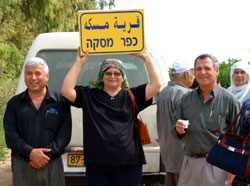
Miske Nakba Day 2002 (2)
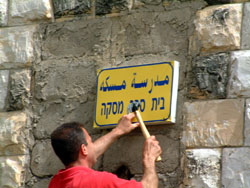
Miske Nakba Day 2002 (3)
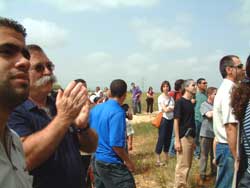
Miske Nakba Day 2002 (4)
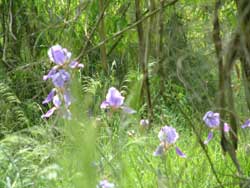
Miske Nakba Day 2002 (7)
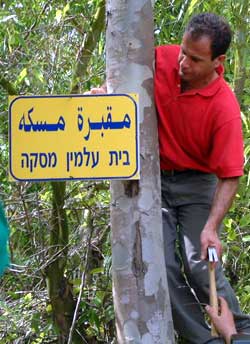
Miske Nakba Day 2002 (8)
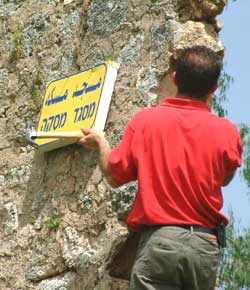
Miske Nakba Day 2002 (9)
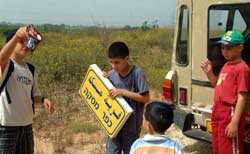
Miske Nakba Day 2002 (5)
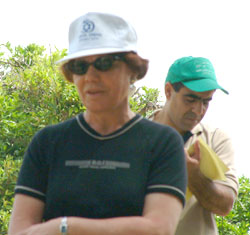
Miske Nakba Day 2002
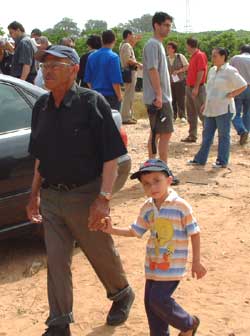
Miske Nakba Day 2002 (1)



